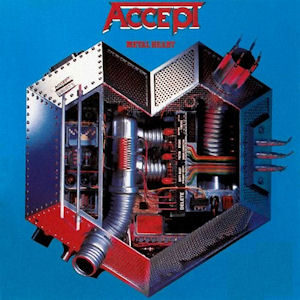Photo Credit: The National Interest.
As Russia, China, and America race to develop cutting edge fighter jets, the European Union is starting to feel pressure to invest heavily in its own aero defense. Perhaps, given the overhyped Russian threat and the ongoing American investment in EU defense, the EU should resist the pressure to upgrade.
Air superiority has come to be understood as a requisite for military success. Symmetrical wars cannot be won without control of the skies. And often, the combatant with the most advanced airframe technology controls the skies—thus, advanced airframe technology is vitally important to overall war-making capability. Understandably, countries concern themselves with who amongst them has the most advanced aerial tech.
Most of the EU’s fighter aircraft are “fourth-generation.” (Here’s a great breakdown of the different generations in fighter plane development) Fourth generation fighters were mostly designed in the 1970s. They are venerable machines: fast, maneuverable, lethal. Examples include America’s F-15 and F-16, France’s Rafale, and Russia’s MiG-29. But as surface-to-air defense systems became more advanced, fourth-generation fighters lost the capacity to enter denied air space (or, air space controlled by enemy forces)—obviously, an essential function in converting denied air space to open air space. The result is a significant reduction in the offensive abilities of fourth-generation fighters.
Terrified of falling behind, countries are scrambling to produce “fifth-generation” technology.
Fifth-generation fighters incorporate stealth technology, which allows a plane to avoid detection by surface-to-air defense systems and operate within denied air space. Additionally, fifth-generation tech typically incorporates advanced avionics and computer systems that enable networking amongst other elements within the battlespace for the purpose of increasing situational awareness. For example, an F-35 is able to collect information, process that information, and share it with another F-35. By and large, EU members’ air forces are mostly fourth-generation technology. With Russia pushing for fifth-generation technology, EU countries are being forced to make a decision.
Four common courses of action are emerging among EU members: 1. Purchase the American-made F-35; 2. Develop a European fifth-generation fighter; 3. Upgrade the avionics of current fourth-generation fighters; 4. Do nothing at all.
F-35
The Lockheed Martin F-35 is priced at roughly $80 million per unit. Despite the recent price drop (the first batch of F-35s cost over $200 million per unit), most EU members are unwilling or unable to purchase such an expensive airframe. To date, Italy, Netherlands, the United Kingdom, and Turkey have purchased the F-35. With projections of $1.5 trillion invested, the F-35 is the most expensive weapons system in human history. The costs, and production delays, have inspired harsh criticism of the F-35’s design and utility. But without question, the F-35 offers EU members an upgrade on their existing fighter technology.
The F-35 was designed to be a multi-role (and multi-variant) platform—a jack-of-all-trades that could serve in any capacity. But the most revolutionary aspect of the F-35 is the sophistication and integration of the plane’s electronic systems. So, the significance of the F-35 comes not from speed or maneuverability, but rather from advanced computational abilities.
For the EU states that can afford the F-35, there are four major upsides.
First, the F-35 offers a shortcut to fifth-generation technology. Italy and the UK can just sign a check and receive their airframes—they don’t need to invest the remarkable costs, time, research, and stress that would go into the development of a domestic F-35. Second, the F-35 is a known entity and a quality product. Purchasing the F-35 removes any guessing from the equation. You know what you are getting. Third, an F-35 purchase gives EU member states fifth-generation technology now. Fourth, the transaction would help to further tether America to the EU and NATO—and American oversight is really the easiest way to ensure Europe’s defense.
Homegrown Fighter
Some EU members do not want to rely on America so heavily. France, Germany, and Spain have bankrolled European aerospace manufacturers Dassault and Airbus to develop a new advanced fighter: the Future Combat Air System (FCAS). To date, the FCAS is the only European-based fighter development program.
The FCAS is an attractive option for EU members hoping to wean themselves from over-dependence on American assistance. And the hope is that the FCAS will ultimately produce a higher-quality product than the F-35. Yet, developing a new fighter from scratch can be a nightmarish journey of delays, cost overruns, quality-control problems, and bureaucratic infighting. The F-35 development, for example, went $1.5 billion over budget and is several years behind schedule. Perhaps the FCAS program can avoid similar pitfalls—but the program is a dice-roll. And even if the FCAS development goes as planned, the program is not scheduled to produce an operational fighter until 2040-2045.
Avionics Upgrade
EU member air forces also have the option of upgrading the avionics software in their existing fourth-generation fighters—converting the planes into something like a 4.5-generation fighter. The upgrade option is certainly more cost-effective than buying an F-35 fleet, and more expedient than developing a homegrown fifth-generation fighter. However, the upgrade relates strictly to the plane’s software, leaving the hardware unimproved. So, the stealth technology, which has become a prerequisite for accessing denied airspace, will not be included. Accordingly, the avionics upgrade is a stopgap measure, not a conclusive remedy. Without stealth technology, EU planes will have limited applicability in modern warfare.
The United States is providing a template for avionics upgrades. The US is currently upgrading software to improve weapons, radar, and communications systems on the F-15, F-16, and F-18 fighters. The upgrades will push out the relevancy date of these airframes, which were designed in the 1970s, but again, fails to provide the stealth capabilities so vital in today’s aerial arena.
Atrophy
Slovenia, Hungary, Romania—these EU states allow their air forces to atrophy. Long outdated air forces are being allowed to decay further. This industrial negligence may appear reckless—but the decision is quite pragmatic. Smaller EU countries rely on the ‘strength in numbers’ aspect of belonging to the EU and NATO for their defense. Smaller, weaker EU states understand that their safety does not depend upon the development of a proper air force. They don’t have the resources, or the ambition, to catch up in an aerospace arms race. The option to match the US, Russia, or China simply does not exist. Instead, these smaller EU states rely upon insulation from bigger, stronger member states. Accordingly, there is not much need to develop a better fighter fleet.Doing nothing may well be the smartest course of action. The Russian threat is overblown. Despite the popular narrative, which I assess in this piece, Russians lack the ambition to push further into European territory. And were such an incursion to happen, the US would not sit idly by. The current crop of EU fourth generation fighters (Saab Gripen, Eurofighter Typhoon, Dassault Rafale) are likely adequate to handle any plausible conflicts. While the US needs to encourage the EU to provide its own defense, the truth is the EU can achieve levels of sufficient airspace security without dumping billions into new fleets of fighter jets.











Be First to Comment